Atmosphere and the Poetic Image
“We come not to see the work of art, but the world according to it.”[1]
– Maurice Merleau-Ponty
Experiment 5: The physical walk viewed virtually - Video
In this next experiment, I worked with the video I had created as I walked to explore methods of overlaying sound while visualizing the pace and movement of both a physical and virtual walk. I experimented with snippets of video details, sounds and images and decided on a compilation video that mixes the physical space (views of my walking feet, the sky and recorded sound) with a video that walks a path through Klybeck on google maps. The surrealness of the images from google maps, always perceived in silence combined with the pace and sound of my falling steps creates a new idea of movement and tactility, transforming the silent shifting virtual space.
Experiment 4: Experiments between the virtual and haptic


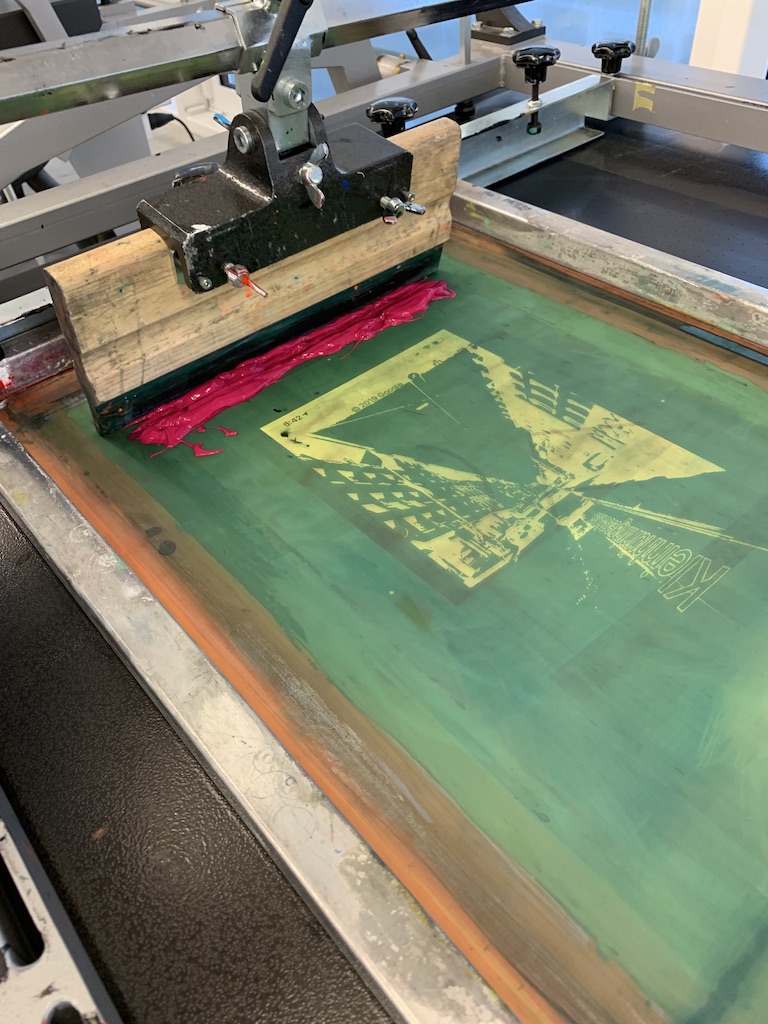














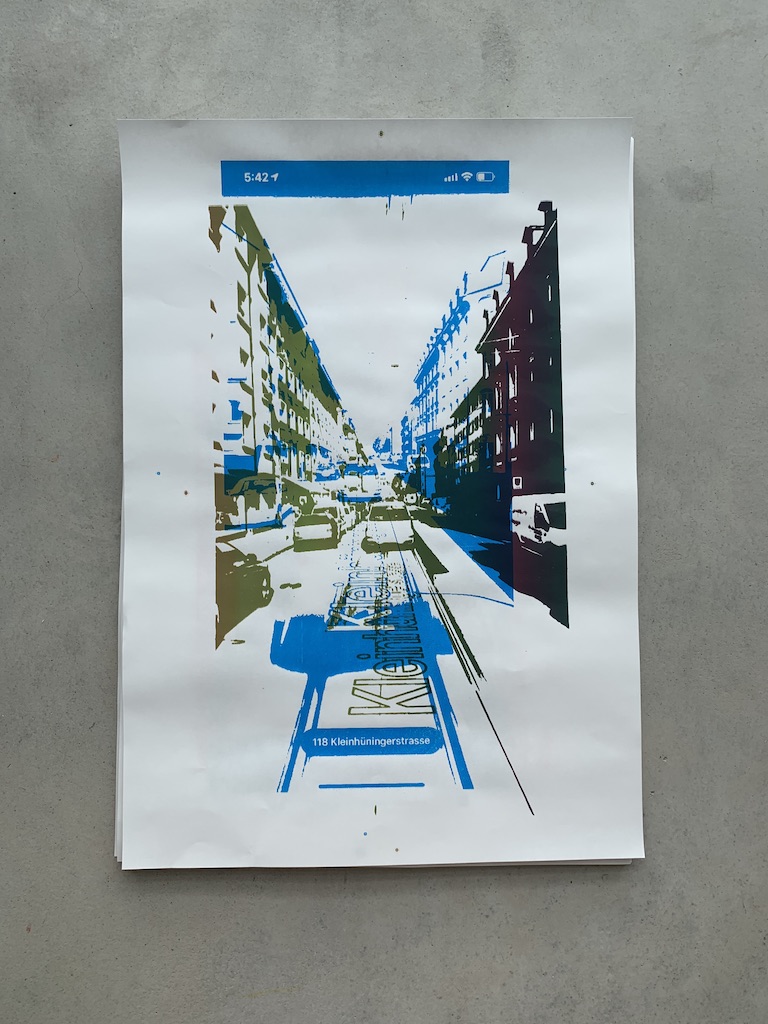
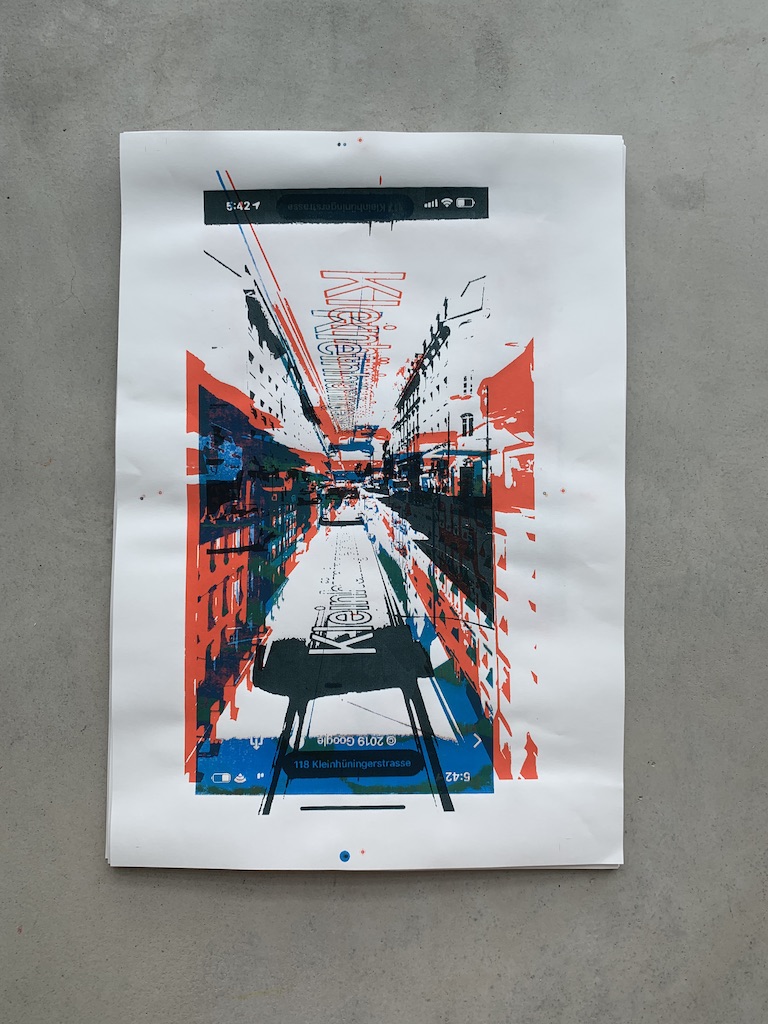

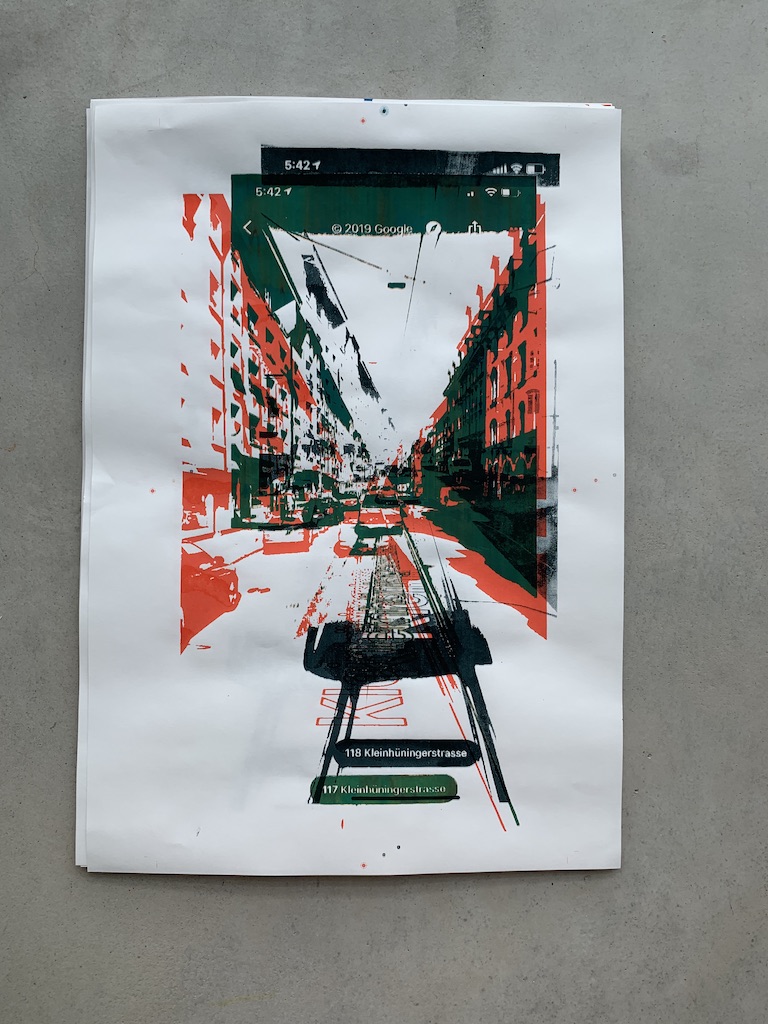
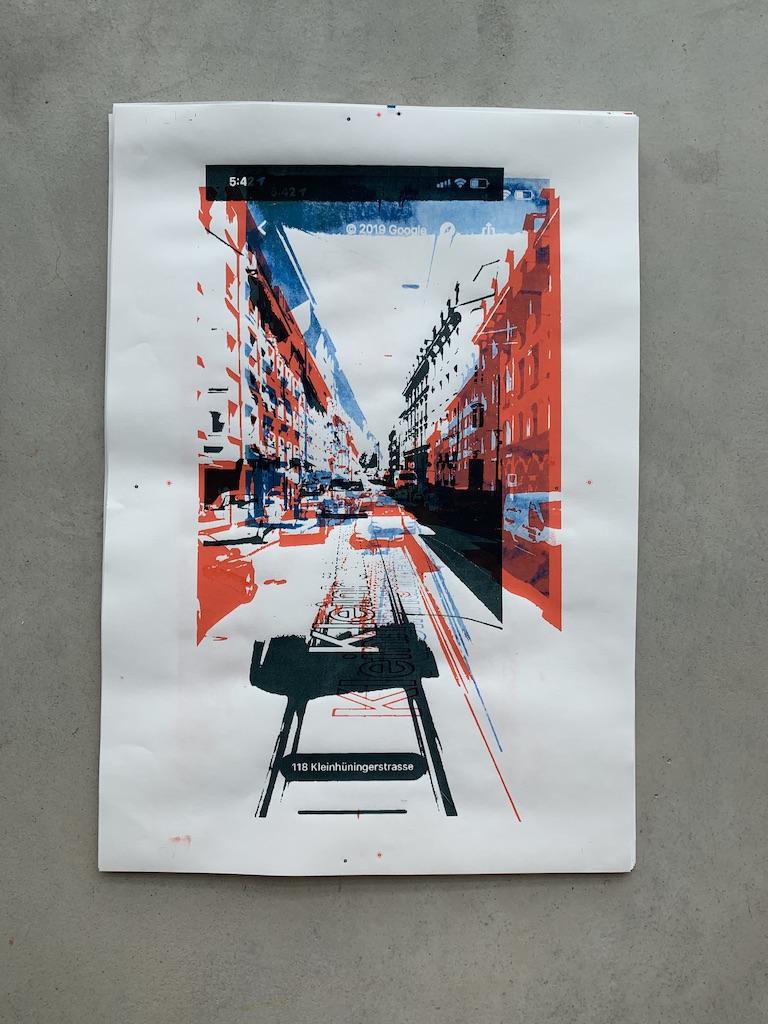


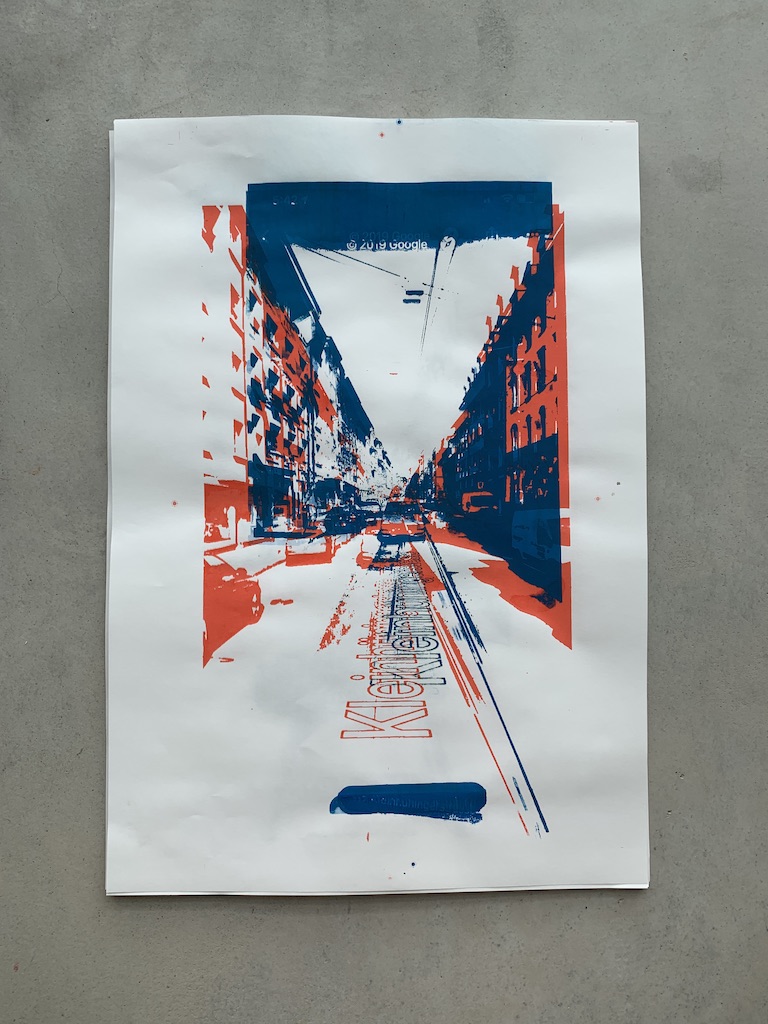
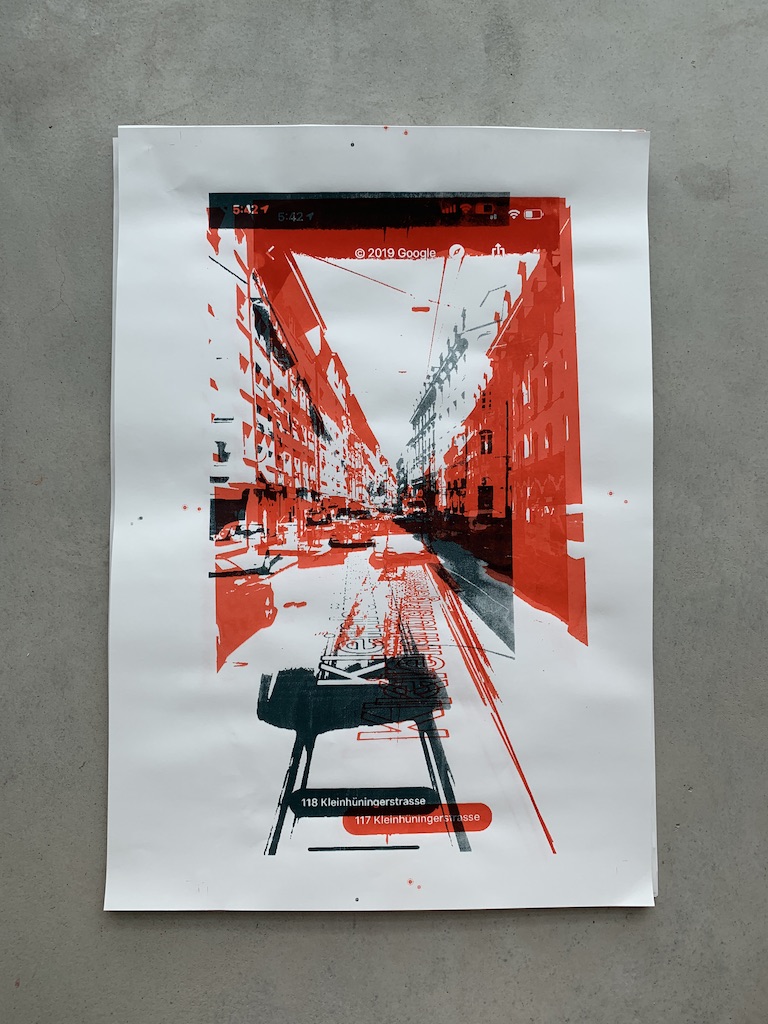



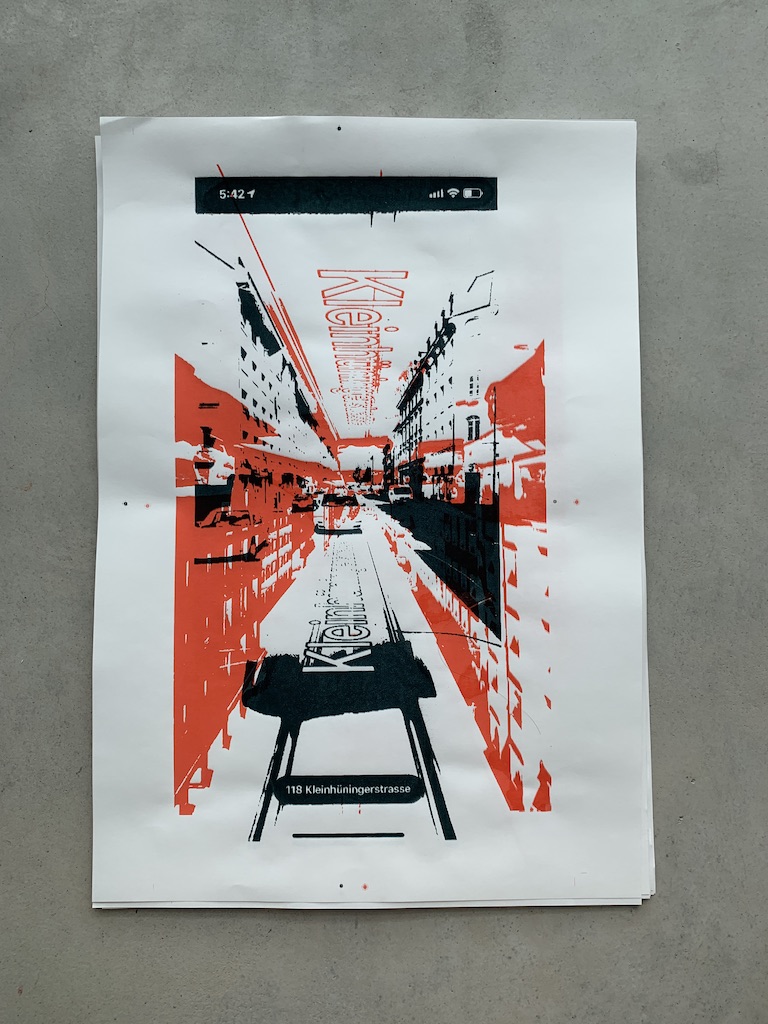


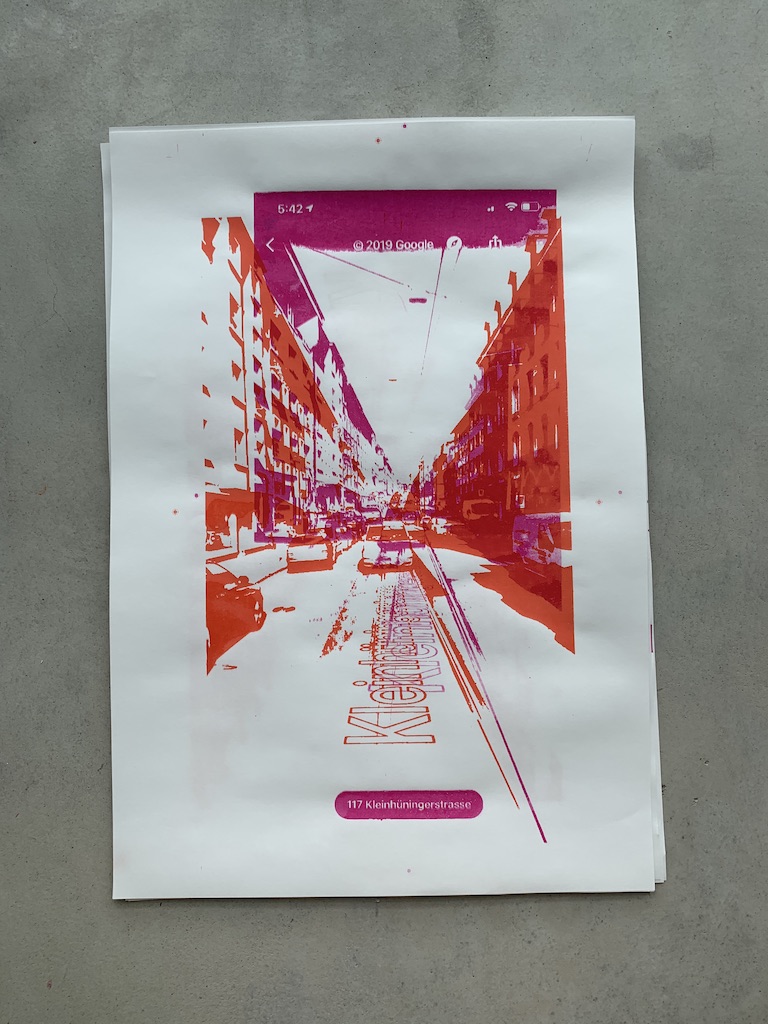

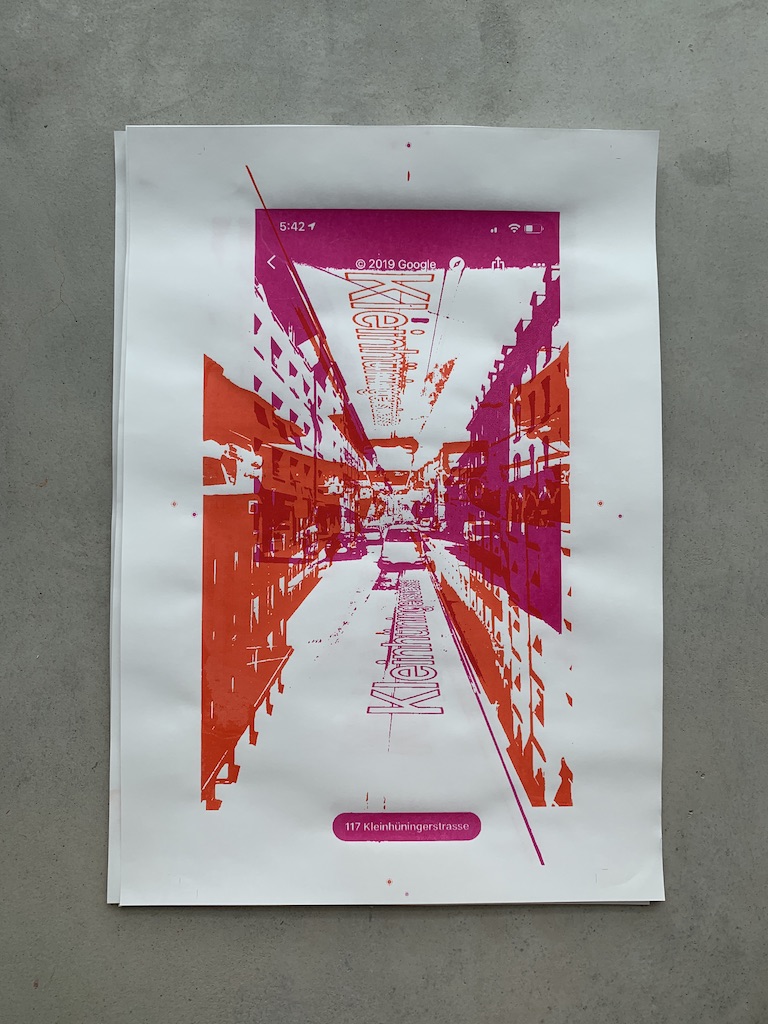
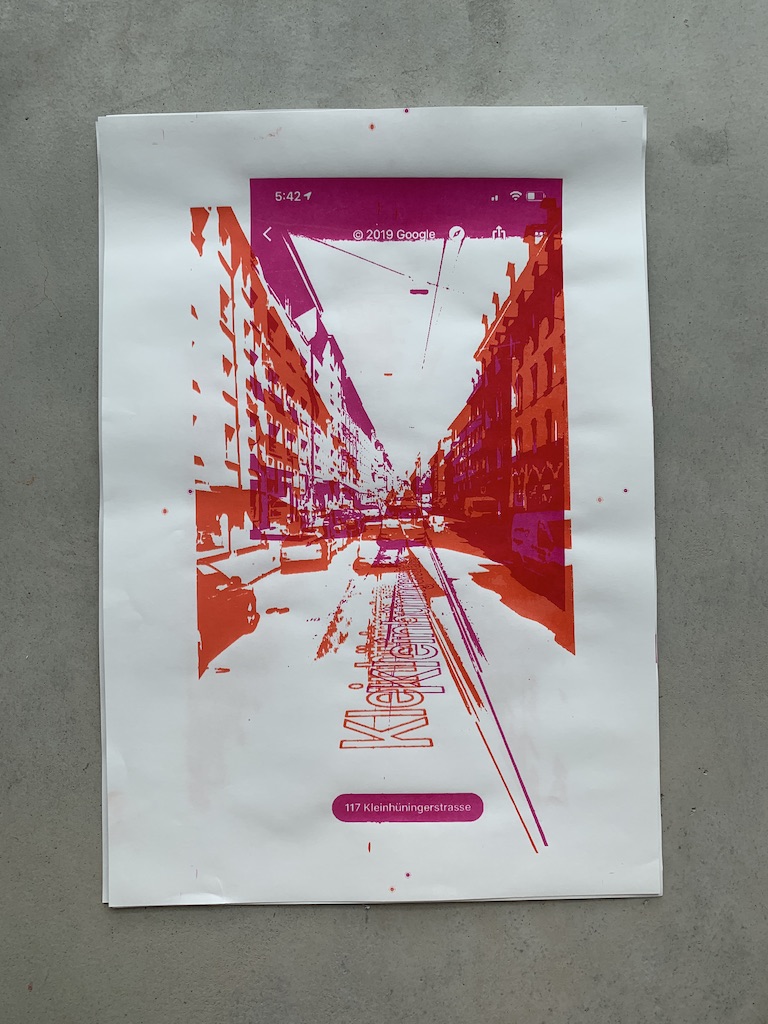
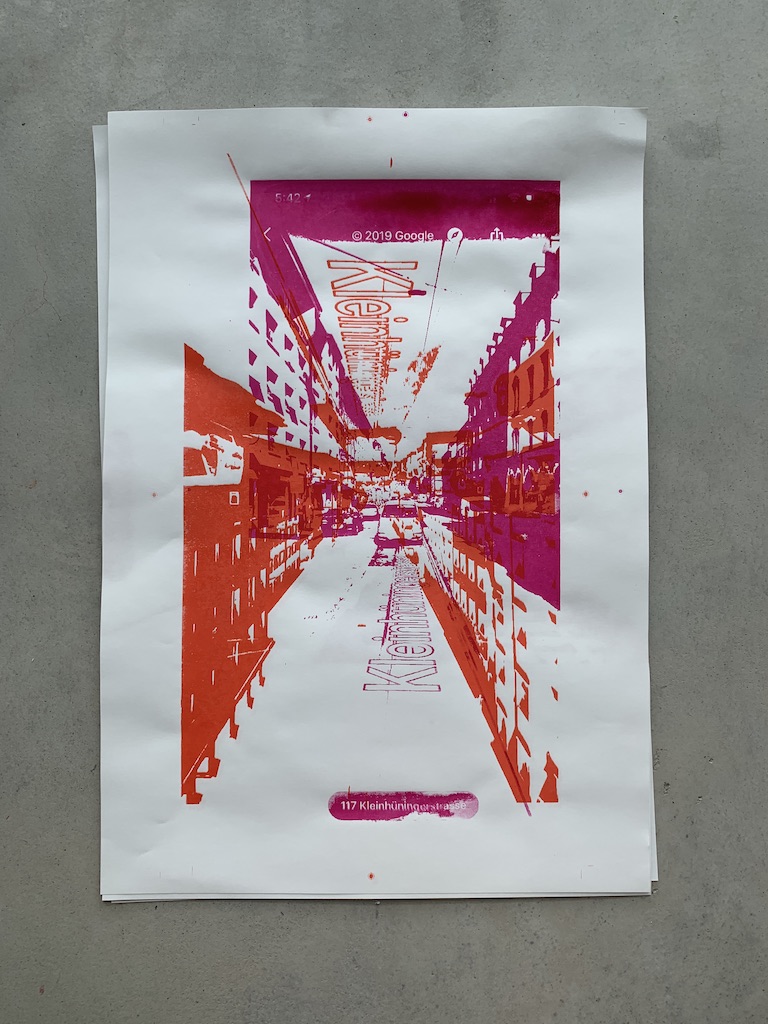
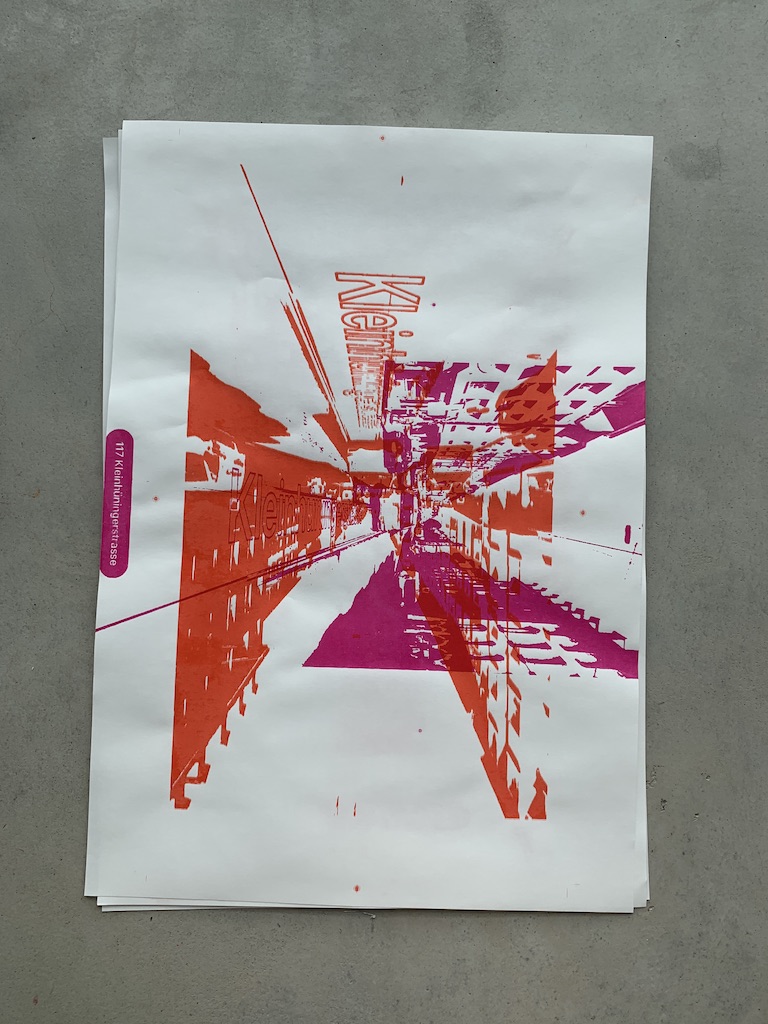







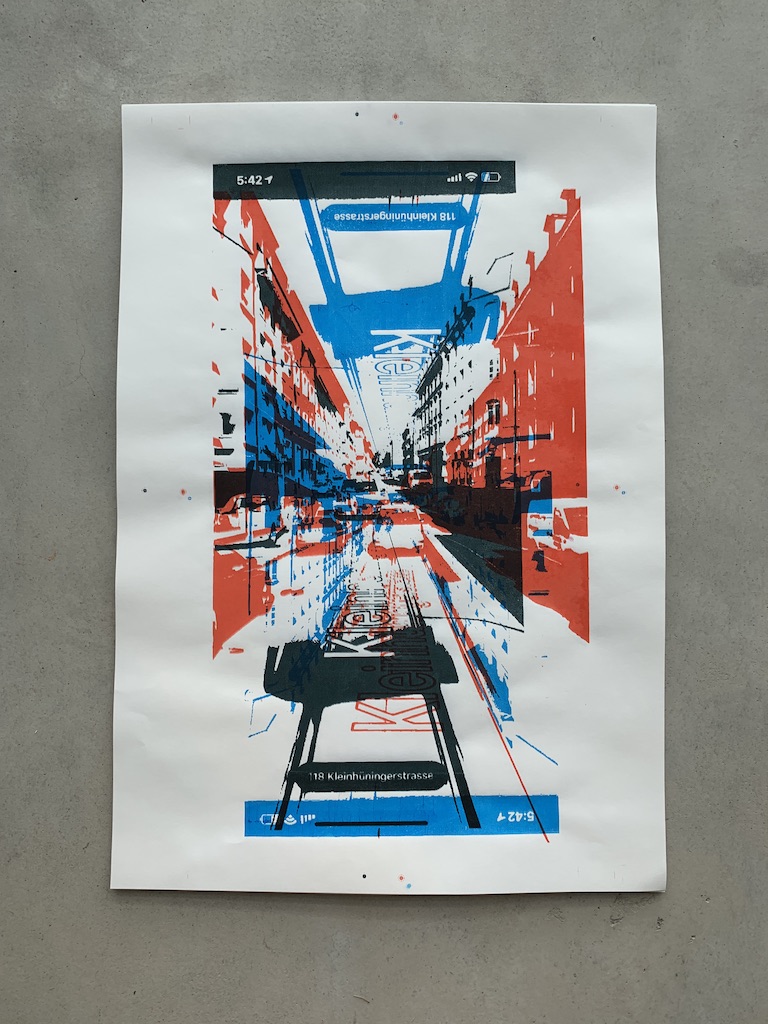

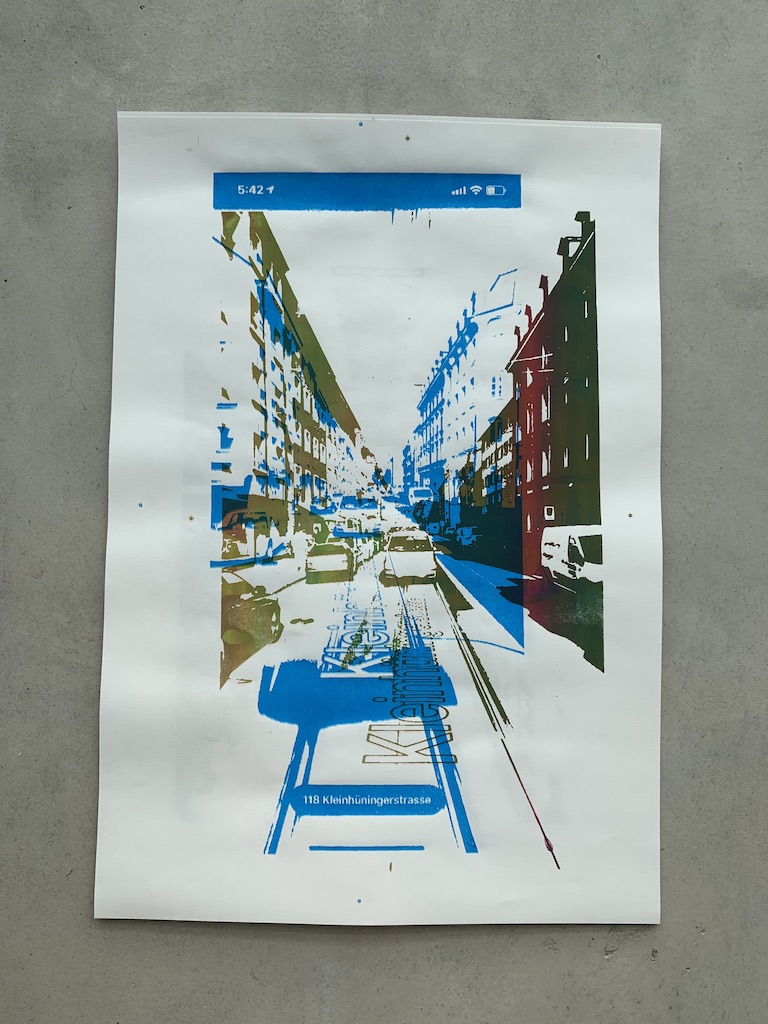
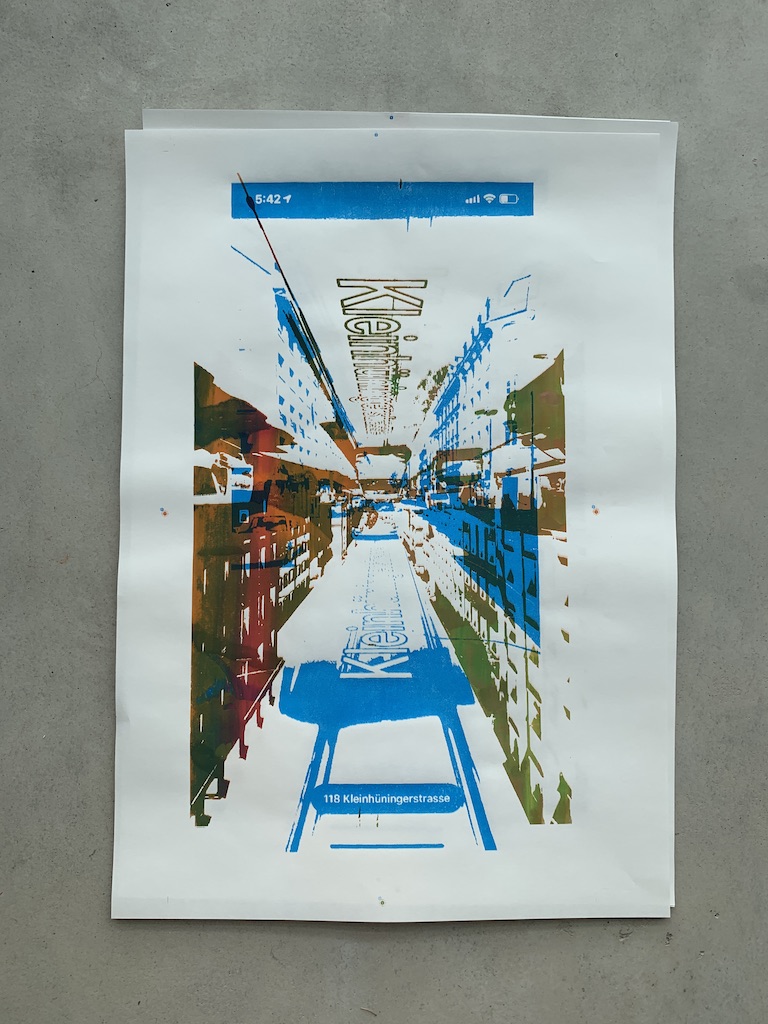



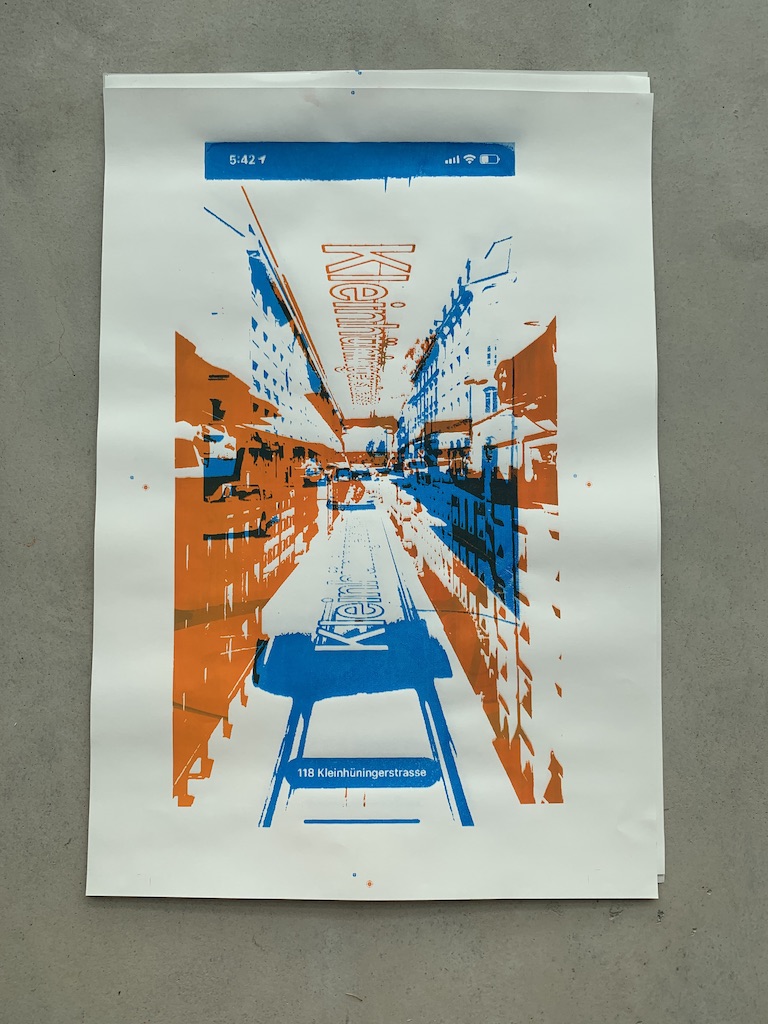
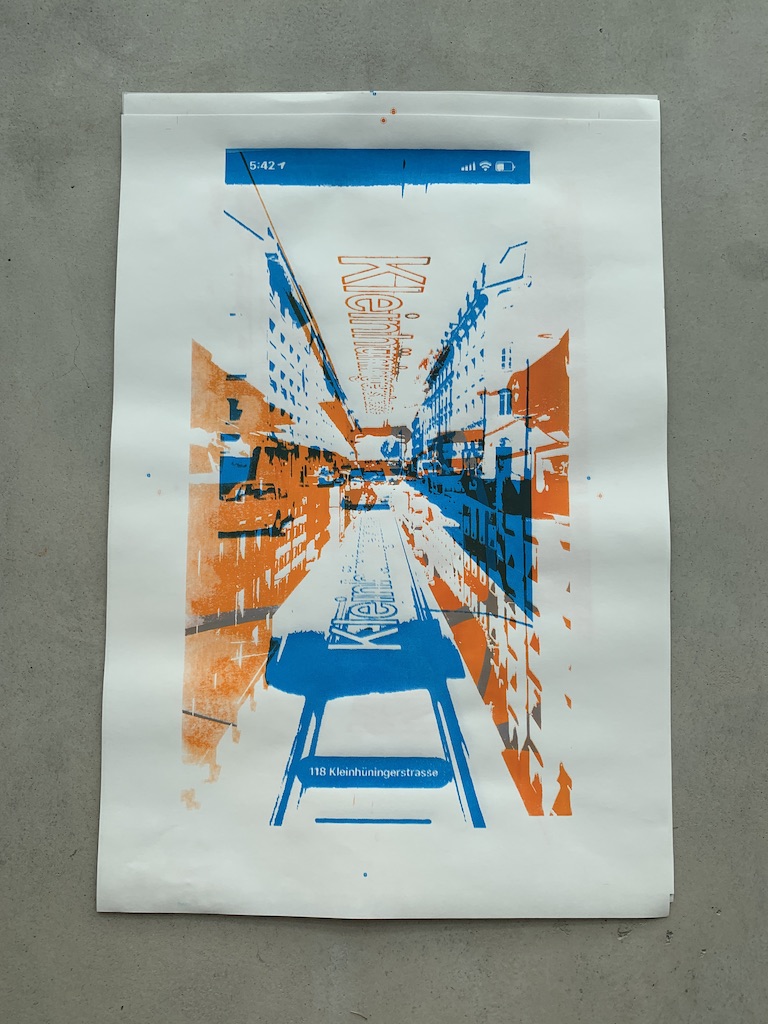



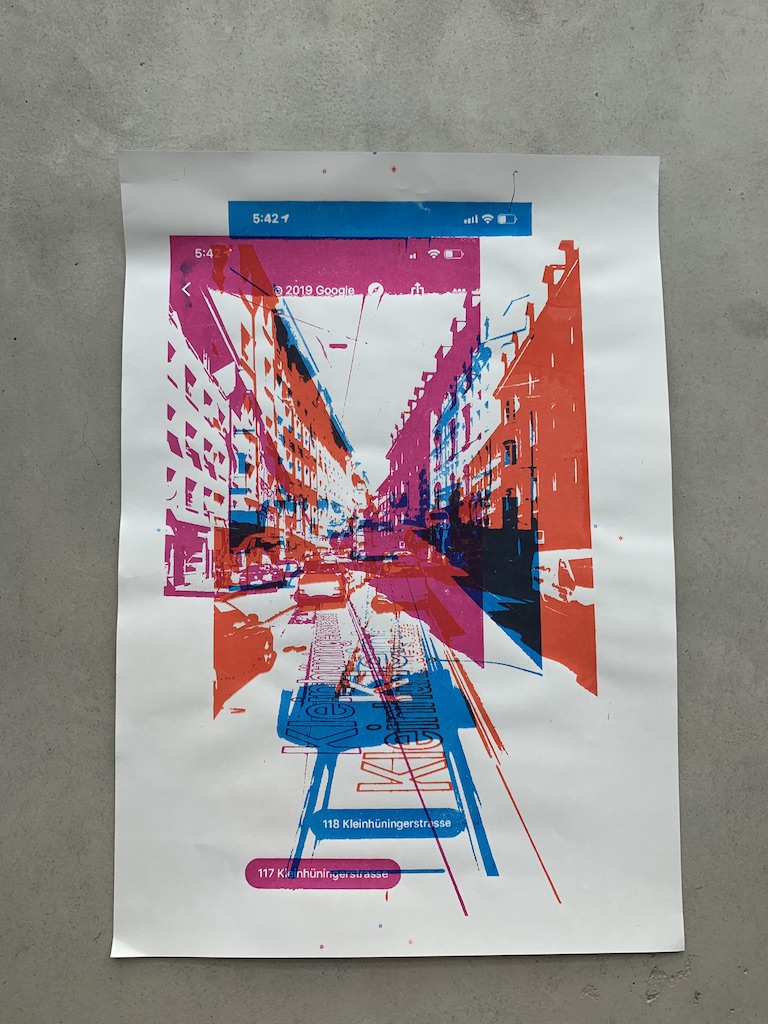

In this experiment, I am exploring the dialogue between the virtual world and the haptic world by moving the mapping images that we are used to seeing on our phone, into an analog image. By utilizing silk-screening, I emphasized further the contrast between the image and the haptic character of the artwork. These images are purposefully at a scale much larger than we are used to seeing on our devices, which allowed the viewer to confront it as a physical artifact, unreal and real at the same time.
Discussion of the nature of poetic images in the visualisation of urban space
This final section discusses the perception and communication of qualities of urban space that are sensed in our minds, that are often not visible or have an elusive or dream-like atmosphere. These types of images which we create in our mind can also be referred to as poetic images.
Poets have often used language to provoke imaginative images in the mind of the reader. In his book, The Poetics of Space, Gaston Bachelard uses this phrase from a Tristan Tzara poem as an illustration of this: “Le marché du soleil est entré dans la chamber | Et la chambre dans la tête bourdonnante.” (The market of the sun has come into my room | And the room into my buzzing head.) Bachelard describes the visualization of this poetic phrase; “In order to accept and hear this image, one must experience the strange whir of the sun as it comes into a room in which one is alone, for it is a fact that the first ray strikes the wall. These sounds will be heard also—over and beyond the fact—by those who know that every one of the sun’s rays carries with it bees. Then everything starts buzzing and one’s head is a hive, the hive of the sounds of the sun.” This is the essence of the poetic image; it provokes the imagination and allows us to see beyond the reality that is visible and create new images.”[2]
In the context of visualizing urban space, the poetic image moves beyond the physical aspect of movement and time, or the visual perception of perspective and peripheral images and into the emotional, atmospheric or memory-draped experience of space, all qualities that exist in our mental image.
Poetic images are by their nature considered artistic; the ability to perceive and communicate a mental experience has often been considered as in the realm of the poet or artist “The artist has always known that the physically encountered, remembered and imagined are equal experiences in our consciousness; we may be equally moved by something evoked by the imagined as by the actually encountered.”[3]
Ezra Pound, the poet and critic, described poetry which evokes this type of image, “An ‘image’ is that which presents an intellectual and emotional complex in an instant of time. Only such an image, such poetry, could give us that sense of sudden liberation: that sense of freedom from time limits and space limits; that sense of sudden growth, which we experience in the presence of the greatest works of art.” [4]
Earlier in this thesis, I spoke of the experience of the urban space or community as a ‘mental event,’ and it is precisely in attempting to visualize something as complex as a mental event that the poetic image becomes useful. It is the ability of the poetic image to evoke the imaginative visualization of that which is not visible which allows communication of the totality of a lived instance. Juhani Pallasmaa believed that poetic images “activate the power of imagination in the observer, and they express the essence of a lived experience.”
This imaginative potential of the poetic image is one of its most important components. In the words of the French philosopher and poet, Gaston Bachelard, “Imagination is not, as its etymology would suggest, the faculty of forming images of reality; it is rather the faculty of forming images which go beyond reality, which sing reality. It is a superhuman quality.” [5]
In the experiments here, I am not only guided by the goal of creating poetic images but also specifically the idea of creating images that provoke the viewer to create new images in their minds. In creating these images, I refer once again to Bachelard’s thinking on imagination from Air and Dreams: an essay on the imagination of movement; “If the image that is present does not make us think of one that is absent, if an image does not determine an abundance - an explosion - of unusual images, then there is no imagination…. The value of an image is measured by the extent of its imaginary aura… In human reverie, the world imagines itself”. [6]
[1]Moya Pellitero, A.M., 2007 p.58 Here referencing Maurice Merleau-Ponty in The Phenomenology of Perception. London: Routledge.(1962)
[2] Bachelard & Stilgoe, 1994 p.303-304
[3] Pallasmaa, 2012 p.163
[4] McClatchy, 1990 p.xi Here quoting Ezra Pound
[5] Bachelard, 1999 p.16
[6] Moya Pellitero, A.M., 2007 p.57 Here quoting Gaston Bachelard from his book Air and Dreams: an essay on the imagination of movement.